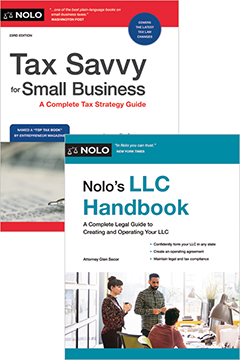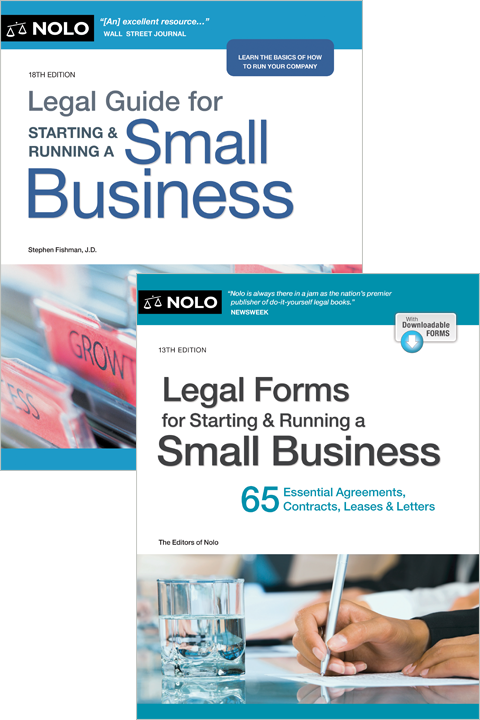Some partnerships aren’t meant to last. If you’re ready to dissolve your partnership, you’ll need to take seven steps to end your obligations to the business, including paying debts and distributing assets.
To close your partnership, you'll need to formally dissolve and wind up the business. It's important to dissolve your partnership so that you're no longer liable for the company's debts. Legally ending your business also means that your partners can no longer bind you to a business deal—making you personally liable for it—without your knowledge or agreement.
This article discusses the steps you need to take to formally dissolve and wind up your partnership.
- Step 1: Talk to Your Business Partners
- Step 2: Vote to Dissolve Your Partnership
- Step 3: File Dissolution Papers
- Step 4: Publish Notice of the Dissolution
- Step 5: Liquidate Your Assets and Settle Your Debts
- Step 6: Distribute the Partnership's Remaining Assets
- Step 7: Close All Accounts and Cancel Licenses and Permits
It also covers the topic of when you might want to consult a business attorney. If you have more questions, check out our FAQ on partnerships.
Steps to Dissolving a Business Partnership
While partnerships are one of the more informal business structures, you still need to take legal action to dissolve and wind up your company. Your partnership agreement and state law might have slightly different rules, but generally, you can follow these steps to end your business.
Step 1: Talk to Your Business Partners
If you want to dissolve your partnership, you should approach your business partners. Your partners might agree that the business should come to an end. In that case, you should see whether your partnership agreement provides rules for dissolution, including how to vote for dissolution and how debts will be handled.
If you don't have an agreement, then you should follow your state's laws. If you want to handle the dissolution differently from the default rules provided by state law, and you don't have a partnership agreement, then you and your partners should draft a partnership dissolution agreement. That agreement should lay out:
- each partner's responsibilities in the winding-up process
- how the partnership's physical assets will be liquidated, and
- how much of the business's debts each partner is responsible for.
If only you want to end the partnership and your partners would like for the business to continue, the partnership can carry on as long as your partnership agreement or state law allows it to. You might be able to sell your share of the partnership to your partners or to a third party. You can look to your partnership buyout agreement or the buyout provisions in your partnership agreement—if you have them—for rules on:
- when you can sell your share
- whom you can sell your share to, and
- how much your share is worth.
If the partnership doesn't have any written agreement, consider talking to an attorney with experience working on partnership dissolutions. They can help you draft a dissolution agreement.
If you might want to sell your share of the partnership rather than end the business altogether, it's also a good idea to talk to a lawyer. They can help you consider your options and arrange for a clean transfer of your partnership interest.
Step 2: Vote to Dissolve Your Partnership
Once you've talked to them about ending the business, you and your business partners need to vote to dissolve the partnership. Usually, you'll vote to end the partnership either at a meeting or by written consent of the partners. You should record the decision in writing and keep it with your business documents.
Look to your partnership agreement for specific rules on the dissolution process. Your partnership agreement might say that only one partner needs to vote to dissolve your partnership for it to officially end. If you have more than two partners, then a majority might be required. If you have neither a partnership agreement addressing dissolution nor a separate dissolution agreement, you'll need to follow your state's laws on partnerships.
Sometimes a vote isn't required—instead, certain events trigger the partnership's dissolution. Your partnership agreement or state law might allow (or require) your partnership to end when one of the following occurs:
- a partner withdraws from the partnership
- a partner dies
- a partner becomes incapacitated or unable to perform their duties
- a partner files for bankruptcy
- a partner is expelled from the partnership by the other partners
- an event agreed to in the partnership agreement causes the dissolution, or
- a court orders the dissolution.
Step 3: File Dissolution Papers
It's a good idea to file your state's dissolution-of-partnership form as additional proof that the partnership has been terminated. The form is usually available from your state's secretary of state or corporations division website. Some states require a small fee to file the form.
Typically, filing a partnership dissolution form with the state isn't legally required unless you filed paperwork with the state when you formed your partnership. If you have a limited partnership (LP) or limited liability partnership (LLP), then you likely registered your business with the state. In that case, you'll need to submit a form to the state to dissolve your LP or LLP.
But if you have a general partnership—typically referred to as just a "partnership"—then you probably didn't file any formal paperwork. However, if you did file any documents with the state throughout the life of your partnership—such as a form certifying the partners' authority to enter into business agreements on behalf of the partnership—then your state might require you to file a dissolution statement or certificate.
For instance, in California, a partnership needs to file a certificate of dissolution form only if it filed a statement of authority with the secretary of state when the partners formed the partnership. (Cal. Corp. Code § 16805 (2023).)
Whether you're required to file or not, to make it clear that you're no longer in a partnership or liable for its debts, it makes sense to file the partnership dissolution form.
Step 4: Publish Notice of the Dissolution
It also makes sense to publish a notice in the local newspaper that your partnership is no longer in business. While not usually required, publishing this notice lets everyone (including unknown creditors) know that the partnership, as well as any partner acting on its behalf, can no longer incur debts.
Providing public notice is especially important for partnerships because, as a general principle, any partner can bind the partnership to a deal without letting the other partners know. You could be on the hook for debts you don't know about.
For instance, suppose you and your partner decide to end your business relationship and you publish notice of the dissolution in your local paper. After the newspaper runs your notice, your partner signs a loan in the partnership's name. You probably wouldn't be liable for the business loan your former partner signed because the lender had notice that your partnership was no longer doing business.
Step 5: Liquidate Your Assets and Settle Your Debts
When you're closing down your business, you'll probably have final debts to pay. To get a good idea of the money your partnership has available to pay off its debts, you should sell off (or "liquidate") any physical assets in your partnership's name.
Your physical assets could include:
- real estate
- vehicles
- equipment, and
- inventory.
Once you've liquidated your assets, it's time to settle your debts. You'll need to identify which debts your partnership is responsible for.
Consult Your Partnership Agreement
Look at your partnership agreement for your share of the partnership's debts. While each partner is personally liable for all business debts—meaning a creditor can make a single partner pay the whole partnership debt—your partnership agreement should specify each partner's obligation for company debts.
For example, suppose a creditor obtains a judgment against you personally for a $5,000 loan your partnership signed for. Your partnership agreement says that you and your partner are each responsible for 50% of the business's debts. So, you'd be able to recover $2,500, or 50% of the $5,000 judgment, from your partner.
If you don't have a partnership agreement, then state laws will determine your share of the debt. Usually, state laws require you and your partners to either:
- share equally in the partnership's debts, or
- be responsible for any debt equal to your partnership share—for example, if you own 70% of the partnership, then you'd be responsible for 70% of the business's debts.
Notify Creditors to Discharge Business Debts
Many states allow you, with few exceptions, to dispose of (or "discharge") any business debts by providing notice to your creditors. You should send your known creditors a letter notifying them of your partnership's dissolution. For unknown creditors, a publication in the newspaper is usually enough.
Usually, you'll give your creditors a deadline to send you their claim for what your partnership owes them. Check your state's laws for specific deadlines.
If you send the notice and don't receive a claim by the deadline, then you're usually no longer liable for the debt—that is, you don't have to pay it, with a few exceptions. If you do receive notice of a claim, then you'll likely need to settle the debt.
You should try to see if your creditors will settle for less than what you owe them, especially if your business is strapped for cash. If you need help negotiating with your creditors, consider reaching out to a business attorney. (For detailed guidance, read our article on negotiating debt settlements when you go out of business.)
File Your Partnership's Final Tax Returns
Your business's debts include any outstanding tax obligations. You should file your partnership's final state tax return and pay any taxes your partnership might owe, including sales tax, to the state and local taxing authority.
You should also submit Form 1065, U.S. Return of Partnership Income to the IRS. Make sure you check the "final return" box on your state and federal tax returns. Because partnerships are pass-through entities, you'll need to report any final income and distributions on your personal return.
If your partnership's taxes are particularly complicated or you're not sure what income and expenses to report, consider seeking legal advice from a tax attorney. (For more information, see our article on how partnerships are taxed.)
Step 6: Distribute the Partnership's Remaining Assets
If your partnership has any assets left over, you should divide them among the partners according to each partner's capital account. Your capital balance shows how much you're entitled to from the partnership. For example, suppose your partnership has $10,000 remaining after paying off its debts. Your capital account's balance is $7,000, and your partner's account balance is $3,000. With its remaining balance, your partnership should pay you $7,000 and your partner $3,000.
If there's not enough money left over to pay each partner's full capital account balance, each partner should be paid proportionally to their share of the partnership's distributions. Using our previous example, suppose the partnership has $5,000 left over. You and your partner's capital accounts remain the same, with you being entitled to 70% of the partnership's distributions and your partner being entitled to 30%. So, you'd be entitled to $3,500 and your partner would be entitled to $1,500 of the remaining $5,000 balance.
For more information, see our article on distributing remaining assets to owners when your business closes.
Step 7: Close All Accounts and Cancel Licenses and Permits
If you opened a business bank account for your partnership, you should close it. You should also cancel any business licenses or permits.
Talking to an Attorney
Partnerships represent an informal business relationship that usually requires little maintenance. Perhaps your dissolution and winding-up process will be just as simple. If so, then you and your partners can probably end your business yourselves.
But sometimes dissolving a partnership can be more work than starting or running one. If there's a disagreement among the partners or a complicated list of debts, it can be a good idea to reach out to a business lawyer. They can help you work with your partners to resolve your obligations and end your liability.



